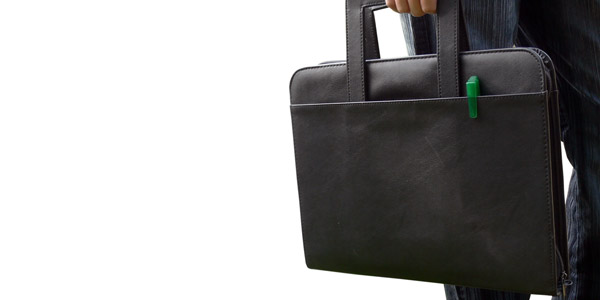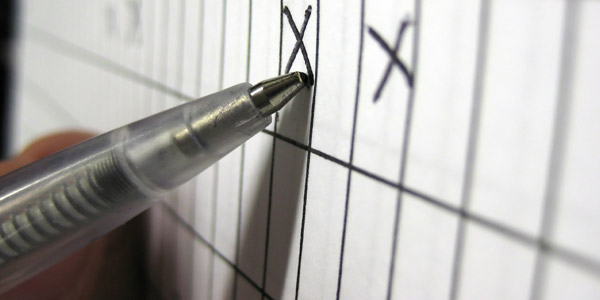There’s been quite the uproar from the design community in the last few years over the phenomenon known as crowdsourcing. Hailed to be the answer for cheap, easy design projects for businesses, crowdsourcing is the process of sending out design requests to a large number of designers with the expectation to pick from finished work rather than pitches or proposals. Dozens, if not hundreds, of designers “compete” to win a bid based solely on their best guess at what the client requires from their brief.
99designs, a famous crowdsourcing marketplace, has become the target of many big name designers who claim that it is destroying the industry.¬† I recently read an excellent article on Spyre Studios that argues strongly against the ideas behind crowdsourcing. While I encourage you to read the whole article, I’ll sum up some of the main arguments against crowdsourcing:
- It’s not a productive use of time
- It’s not good for long-term business relationships
- It kills creativity
- It can hurt reputation
- It generally results in poor work
Now, I’m not hear to argue any of these points. In fact, I strongly agree with all of them. I’m also not claiming to be a huge advocate for crowdsourcing, nor do I suggest established designers to take to the crowdsourcing scene. However I do want to make a simple statement that you may or may not agree with:
Crowdsourcing can be good for beginning designers.
Before you start to argue this point (although I’d love to hear your thoughts in the comments section below) please take time to read why beginning designers and crowdsourcing can be a good fit.
I’ve Got to Build My Portfolio
Every designer needs a portfolio. When you’re just starting out it may be hard to find the work to showcase your talents; it seems like there are just a few options. You could try and find clients to pay you. Maybe one of your friends is willing to take a chance and pay you for a websites or a logo. This is usually comes at a discounted rate but you may be lucky if you find someone willing to pay for a rate close to what you feel you’re worth.
Another option is to do a personal project or two based off a tutorial or from your own creative inspiration. While I will never argue that doing work just for the sake of getting better is a bad thing, it would be nice to have the potential to earn some money. Doing work for yourself will not earn you money directly. (You can make the argument that you are indirectly earning money if you’re building your brand, etc.)

Practice that (Sometimes) Pays
A third option is doing some crowdsourced projects. This can be looked on as a combination of the first two. You’re able to practice and complete a project for your portfolio and there’s a possibility that you’ll be paid for it, if it’s good enough. Even if your project is not selected, you still have a great sample to place in your portfolio. Having some real projects, even if their crowd sourced, can help you as you make future pitches to clients.
Continuing on this thought, the possibility that you’re picked can add some cash and a little excitement to the design project. When the clients aren’t calling, it can be discouraging to just practice your designs with no possibility of direct payment in site. At least with crowdsourcing, there is a chance that you will make some money.
Improve your Understanding of Potential Client Needs
With most crowdsourced work the client will prepare a design brief outlining their project needs, a bit about the company, and a general feel of the direction they’d like the project to head. Many times, as the contest progresses, the client will offer feedback in the form of comments or even disqualifying certain designs. You can learn a lot about what a certain client likes and dislikes.¬† You’re able to get a tiny taste of the feedback of a real project. Also, seeing other designer’s interpretations of a brief may open your mind up to new ideas and techniques.
The more feedback you receive on your designs, the better of your designs and your design process will become. Crowdsourcing allows you to briefly interact with potential clients without much risk for a damaging relationship due to failed expectations. If you don’t win the contest, you can move on with the lessons you’ve learned and the spare designs to add to your portfolio.

Landing the Big Gig
Finally there is the slim chance that crowdsourcing will lead to something bigger then just the initial cash prize. Barton Damer, an amazing graphic artist, was asked to do spec work for a poster design of an established music client. He took the risk and it paid off with not only the cash for that project but also the start to a bigger relationship. His spec work presented the opportunity to do more work for the client which even lead to him being named Digital Artist of the Year. Read his article of spec work for his full story: Spec Work Isn’t All Bad. Trust Me. It’s interesting to note that he would never have had that opportunity if he didn’t take the risk.
The potential for finding a client that will offer repeat business is more likely than you may think. You never know how they may respond to your work. If you get the chance to wow them, they may trust you for bigger projects with better pay. Building relationships is important in any design interaction and who’s to say a relationship can’t get its start from crowdsourced work.
Let’s Be Real
Okay, you’re probably ready to shake me silly with a million reasons why spec work and crowdsourcing are evil. Let’s be real here.
Are there times when spec work can lead to Digital Artist of the Year? Yes. Will everyone be so lucky? No.
Can the crowdsourcing route lead to an amazing portfolio and a sustaiable income? Probably. Is it commonplace for designers to make a living doing spec work? Not at all.
While it’s not the ideal place for beginning designers to start out, crowdsourcing does provide an opportunity for those who don’t have anywhere else to turn. Again, I’m by no means claiming that everyone should flock to these contests with wide eyes and ambition. What I am saying is that crowdsourcing may very well provide an opportunity for those just starting out to get their foot in the door, expand their portfolio, and possibly make a few bucks on the side.¬† Now let the roasting begin…
Want More? Subscribe and We'll Deliver it to You.

 Subscribe to the RSS feed or to email updates, to get even more great content!
Subscribe to the RSS feed or to email updates, to get even more great content!












